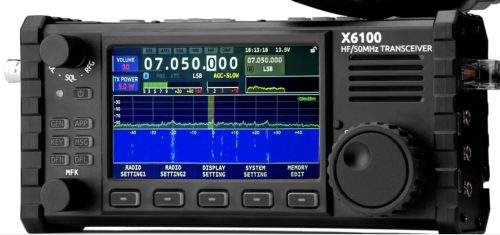Back in April, a friend of mine sent me this excerpt from a NY Times Opinion piece that tries to explain why gun ownership has become such a big thing:
I suspect that part of the reason for the rise of AR-15 fandom is the decline of other American hobby cultures: auto repair, darkroom photography, ham radio operation and the like. Automobiles have become hulking mobile computers that often can be repaired only by manufacturer-approved dealerships; anyone with a smartphone can now take high-quality pictures; no one needs limited-frequency radio bands anymore to talk with people on the other side of the world. Gun ownership is among the last preserves of community for those who might once have enjoyed the opportunities for the innocent pursuit of mastery and refinement afforded by those innocuous pastimes.

Is our technology too sophisticated?
First, I’m not sure that I would characterize auto repair and amateur radio as “innocuous pastimes.” That characterization belittles the value of these hobbies. Fixing your own car helps save money and amateur radio still provides society with a number of benefits.
Secondly, there are now more licensed radio amateurs per 1,000 people in the U.S. than there were when I was kid. I can’t say whether or not there are more shade-tree mechanics now than there were in the 1970s or 1980s, but there seems to be no shortage of auto parts stores. That would seem to argue that home auto repair is just as big a thing now as it was back in the good, old days.
What I have been wondering about, though, is if the technology we have today has advanced beyond what most people are capable of dealing with, at least on a casual basis. In ham radio, many DIY projects use surface-mount components and sophisticated software. Consider the (tr)uSDR. This little QRP rig uses many surface-mount parts and is powered by digital signal processing software!
It’s the same with cars, isn’t it? One of the reasons that there are now perhaps fewer shade tree mechanics than there were before is that automotive technology has advanced beyond what most people are capable of dealing with. There aren’t that many people who have the skills or the desire to tinker with the algorithms used in today’s engine control modules.
One way that ham radio might deal with this is by encouraging a company to come out with a radio that can really be tinkered with along with tools to do this. TenTec took a stab at it with the 506 Rebel, but as I recall, all you could really do was to change some of the control functionality. You couldn’t really change the way that the radio worked.
More recently, the Xiegu X6100 has been hacked, and because the radio is run by an embedded Linux computer, at least one fellow—R1CBU—has developed third-party software to control the radio. Of course, to be able to do this requires a big investment. To tinker with the X6100, one needs to invest the time and energy into learning Linux. That may be asking too much from most hams.
So, I ask again, is the technology we have today has advanced beyond what most people are capable of dealing with, at least on a casual basis? You tell me.
No comments:
Post a Comment